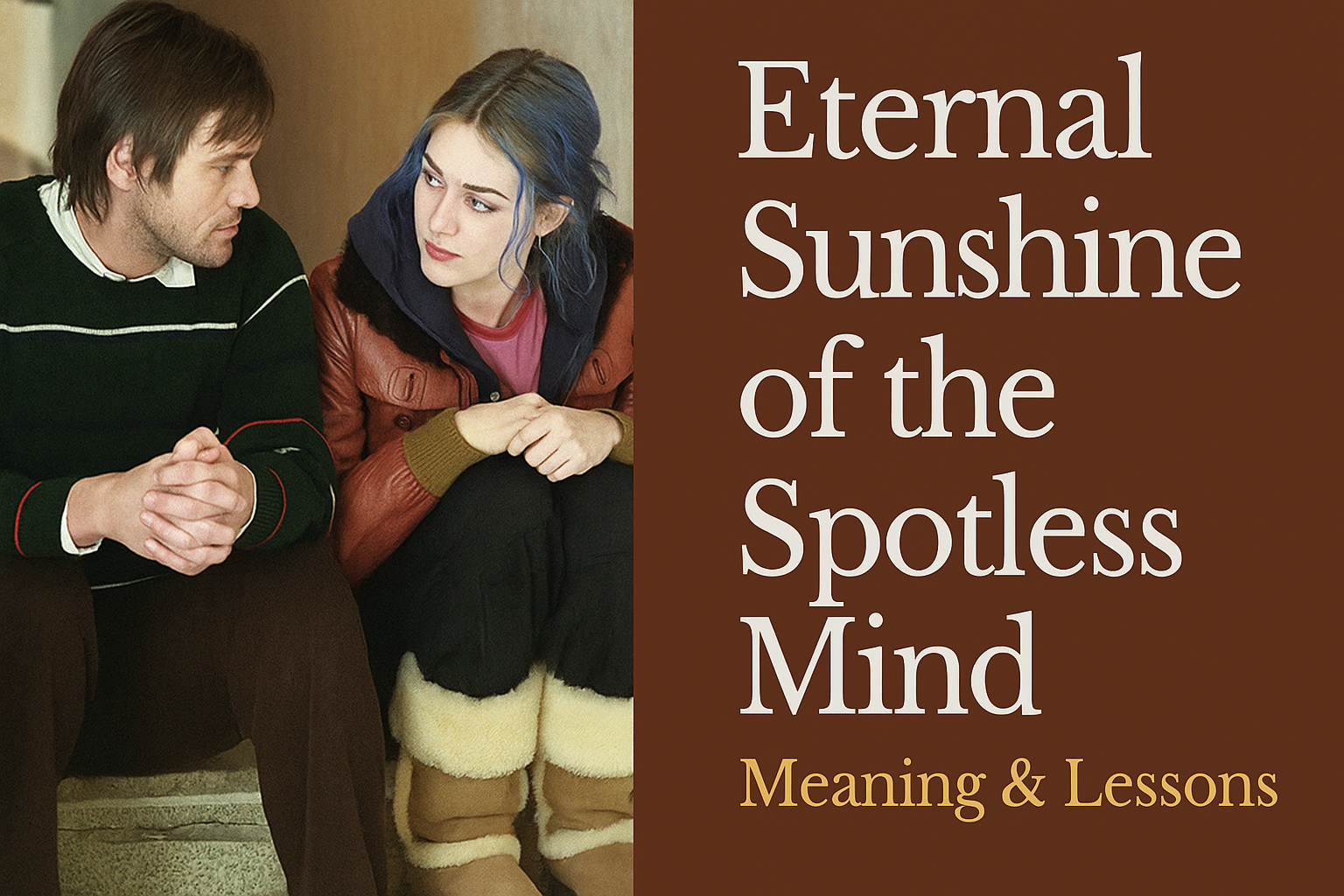Eternal Sunshine of the Spotless Mind – Escapism Vs Conscious Living
Some
films transcend entertainment and become mirrors of our own consciousness.
Eternal Sunshine of the Spotless Mind (2004) is one such film — a poetic
meditation on love, memory, and the human longing to escape pain. Yet, as we
see through the story, true healing lies not in forgetting but in facing life
consciously.
Brief synopsis of movie’s story - Eternal Sunshine of the Spotless Mind is a romantic sci-fi drama that explores love, memory, and the pain of loss. After a painful breakup, Clementine (Kate Winslet) undergoes a procedure to erase all memories of her relationship with Joel (Jim Carrey). When Joel discovers this, he decides to do the same. However, as his memories are systematically erased, he relives their moments together and realizes he still loves her. Desperate to hold on, he tries to hide Clementine within his subconscious memories, but the process continues until she disappears completely. Later, by chance, Joel and Clementine meet again—unaware of their past connection. When they eventually learn about their previous relationship, they choose to start over, accepting that love always involves both joy and pain. The film beautifully portrays how memories and heartbreak shape who we are, suggesting that even if pain could be erased, love would find its way back.
Meaning of Title – Let’s begin by understanding the meaning behind the title *Eternal Sunshine of the Spotless Mind*.
- Mind – The realm where we live, bound by our own beliefs, memories, and conditionings.
- Spotless Mind – The unconditioned mind; a consciousness free from external impressions or mental noise.
- Eternal Sunshine – The ever-present radiance of awareness, the light of
pure consciousness that never fades.
Metaphors and Life Lessons – As we move through the story, each moment reflects a universal truth about how we relate to our experiences and evolve through them.
1.
Erasing memories may seem like an escape from pain, but it is only avoidance.
Both characters take this escapist route, only to find themselves drawn back
together again. True growth happens only when we face life head-on.
2.
Repetition of experiences shows that life brings us the same situations until
we learn from them. We can run away from people or places but never from our
own mind, which keeps recreating similar circumstances.
3.
In relationships, many believe that a different partner would bring happiness.
Yet, each connection mirrors our inner patterns and lessons. Until we
understand and heal those patterns, experiences repeat with new faces.
4.
Our partner is a reflection of our own criteria for love. If suffering arises,
it signals that our initial expectations or criteria were flawed. Growth begins
when we take responsibility for those patterns and evolve them consciously.
5.
Most people focus on whether the other person has learned their lessons,
forgetting that the only person we can truly help evolve is ourselves.
6.
The same principle applies in all areas of life — career, finances, health, and
beyond. Repeating patterns are life’s way of teaching us what we have yet to
integrate.
7.
Often we go through experiences unconsciously, missing the lessons hidden
within them. This unconsciousness keeps the cycle of repetition alive.
8.
The film ultimately reminds us that escapism leads us in circles, while
conscious living leads to liberation. Only when we move through pain with
awareness can we reach the 'spotless mind' — the state of eternal sunshine.
Some of Osho’s wisdom on same point –
- “Don’t escape from suffering — go through it. Only by going through it do you transcend it.”
- “Life will bring the same situations again and again — until you learn what they are here to teach.”
- “Live your desires totally, consciously, lovingly. Then they dissolve into understanding.”
Gratitude!!!
















Leave a Reply